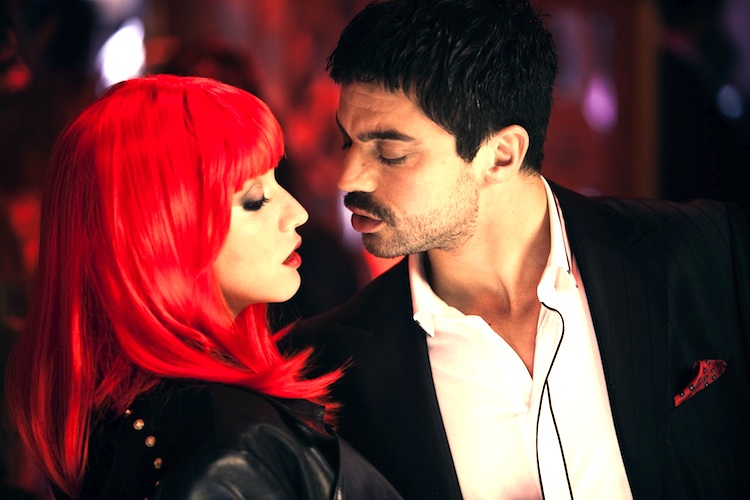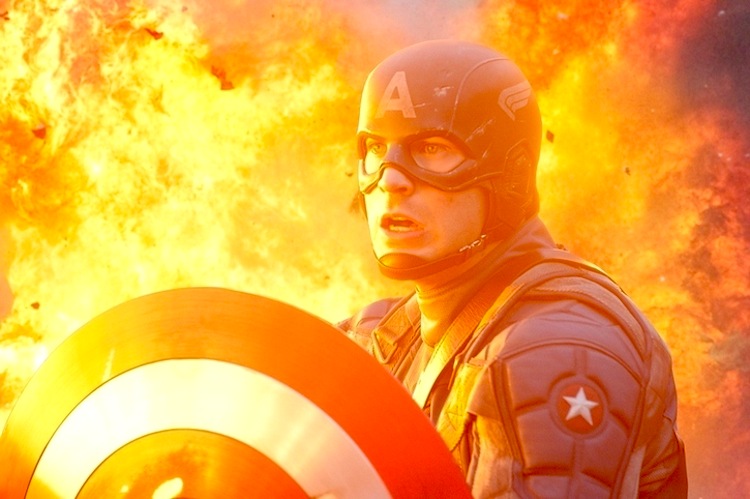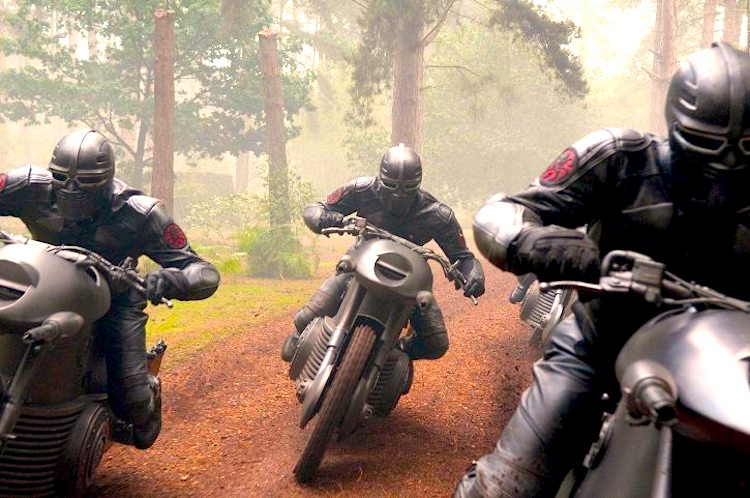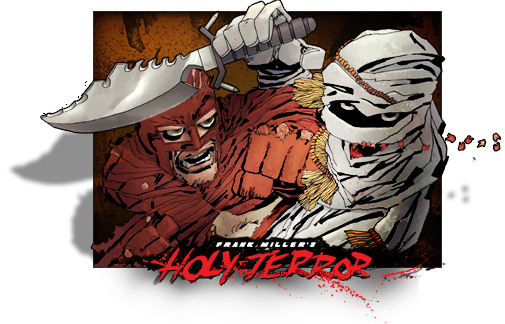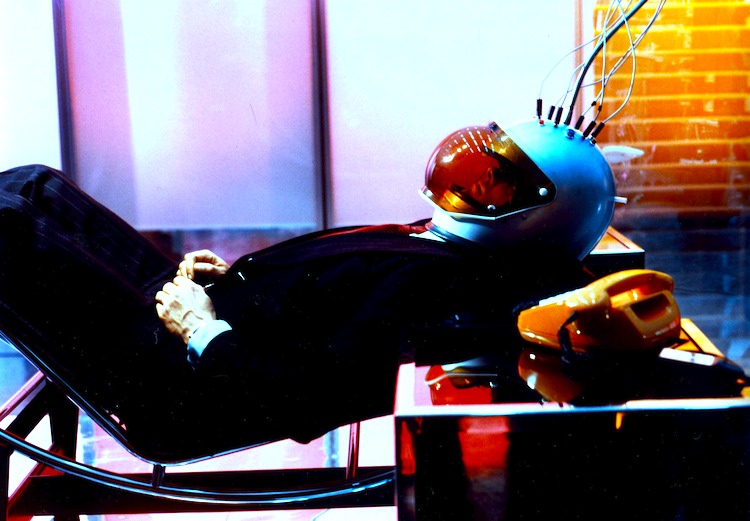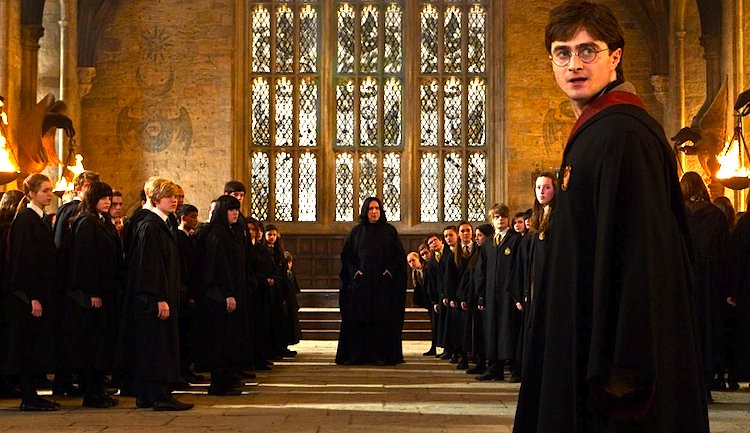
By Govindini Murty. The final film in the Harry Potter series is a pleasant surprise. Directed by David Yates, Harry Potter and the Deathly Hallows Part II offers a satisfying conclusion to the eight-film Harry Potter saga, finally allowing some light into the dark and providing a rousing depiction of the forces of good fighting back against the forces of evil. Deathly Hallows Part II moves along at a brisk pace, keeping things to a lean 2 hours and five minutes. The film provides a number of well-crafted action and suspense sequences, while not short-changing key emotional moments in which the characters reveal themselves in manners that are both dramatic and affecting.
This is all welcome because the prior installment, Harry Potter and the Deathly Hallows Part I, had been a rather melancholy affair. In Part I, the evil reign of the villainous Lord Voldemort had extended itself over all of England – with the forces of good apparently unable to fight back. Albus Dumbledore, the kindly and wise Headmaster of the Hogwarts School of Witchcraft and Wizardry had been killed by the treacherous Professor Severus Snape. Teen wizard Harry Potter and his best friends Hermione Granger and Ron Weasley had dropped out of Hogwarts in order to hide from Voldermort’s forces while hunting down the “horcruxes” or splintered pieces of Voldemort’s soul that Voldemort had hidden away in order to evade death. Voldemort himself was on his way to possessing the “Deathly Hallows” – a set of three magical objects consisting of the all-powerful elder wand, the cloak of invisibility, and the stone of resurrection – that would make him immortal and invincible. The film’s bleak coloration, air of inescapable doom, and depiction of Voldemort as an all-powerful Hitlerian figure who installs a racist, Nazi-style regime that massacres non-magical human beings (known as “Muggles”), had made for rather depressing viewing.
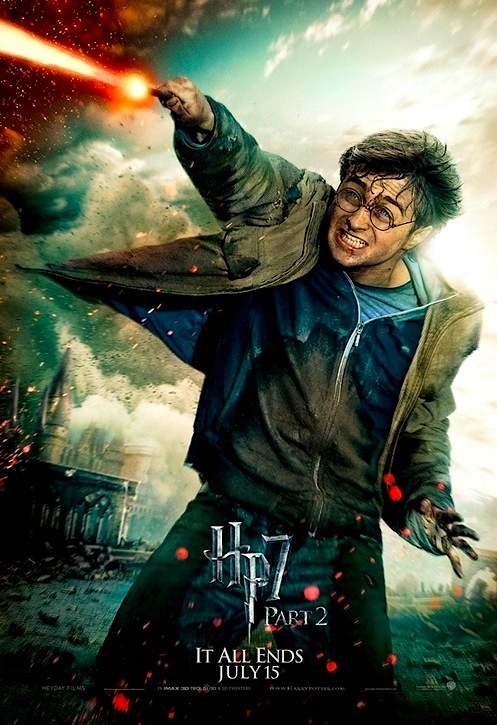 Fortunately, in Part II things start to turn around as Harry Potter and his allies finally rally and fight back against Voldemort. A series of long-laid plans start to come to fruition, and we finally see revealed the full details of Harry Potter’s destiny. After a number of sequences that include a dramatic infiltration of a goblin bank, an escape on a white dragon, and the hunting and destruction of more horcruxes, the action culminates in the Battle of Hogwarts. A fantastic array of good witches and wizards, plucky Hogwarts faculty and students, animated stone statues, magical shields, swords, and spells are used to defend Hogwarts against Voldemort’s supernatural army of evil witches, wizards, ghouls, giant ogres, enchanted snakes, and shape-shifters. This could all make for rather busy and frenetic action, but director David Yates has managed to weave all these disparate characters and thematic strands into sequences that are coherent and compelling.
Fortunately, in Part II things start to turn around as Harry Potter and his allies finally rally and fight back against Voldemort. A series of long-laid plans start to come to fruition, and we finally see revealed the full details of Harry Potter’s destiny. After a number of sequences that include a dramatic infiltration of a goblin bank, an escape on a white dragon, and the hunting and destruction of more horcruxes, the action culminates in the Battle of Hogwarts. A fantastic array of good witches and wizards, plucky Hogwarts faculty and students, animated stone statues, magical shields, swords, and spells are used to defend Hogwarts against Voldemort’s supernatural army of evil witches, wizards, ghouls, giant ogres, enchanted snakes, and shape-shifters. This could all make for rather busy and frenetic action, but director David Yates has managed to weave all these disparate characters and thematic strands into sequences that are coherent and compelling.
In doing so, this last Harry Potter film illustrates what may be the key achievement of the entire series, which is to create a complex fantasy world that fuses mythological and cultural symbols from a number of traditions, while still maintaining a forward-moving momentum and narrative clarity.
My Libertas co-editor Jason Apuzzo commented recently on the information-dense, “palimpsestic” quality of Michael Bay’s Transformers films, and I have to say that that quality very much characterizes the Harry Potter films, as well. In fact, it may be the defining characteristic of the major fantasy/sci-fi film series of the modern era. This trend most notably began with George Lucas’ mythologically-rich Star Wars films, continued through the Lord of the Rings and Harry Potter films, and is now fanning out into innumerable other fantasy and sci-fi novels and movies. Continue reading LFM Review: Harry Potter and the Deathly Hallows, Part II & The Western Cultural Tradition
